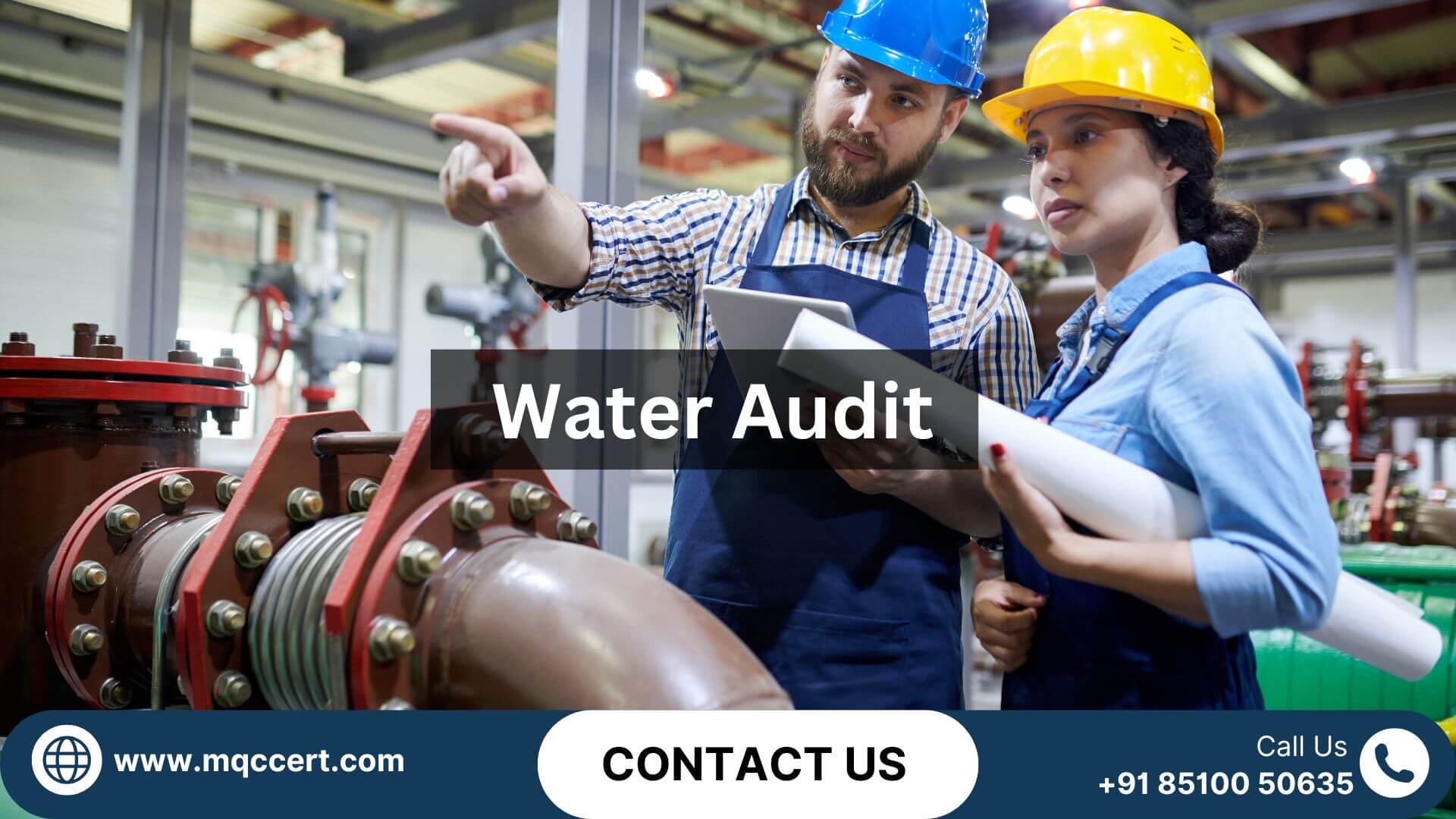
A water audit is a systematic process aimed at assessing water consumption, identifying inefficiencies, and implementing measures to optimize water usage. It involves evaluating the entire water system of a facility or a community, including water sources, distribution networks, consumption patterns, and wastewater management practices. Water audits can be conducted for various purposes, such as improving water efficiency, reducing operational costs, complying with regulatory requirements, and enhancing environmental sustainability.
Water Audit
The world’s freshwater resources are already under pressure from growing industrial production, particularly in water-intensive industries like thermal power plants, pulp and paper, textiles, fertilizers, etc. Consequently, in order for industries to be sustainable in the future, it is imperative that they use water wisely and minimize their water impact. A tool to measure water usage, determine costs connected with it, compare it to national and international benchmarks, and narrow the difference between current consumption and national and international norms is the Water Audit and Water Footprint.
Key Components of a Water Audit:
- Data Collection: The first step in conducting a water audit involves gathering comprehensive data on water usage, including meter readings, billing records, operational schedules, and water quality parameters. This information provides insights into the current water consumption patterns and forms the basis for further analysis.
- System Assessment: Once the data is collected, the next step is to assess the entire water system, including water supply sources, distribution networks, storage facilities, and end-use processes. This evaluation helps in identifying potential areas of water loss, leakage, inefficiency, and contamination.
- Leakage Detection: The primary objective of a water audit is to detect and quantify leakage within the water distribution system. Advanced technologies such as acoustic sensors, flow monitoring devices and infrared imaging can be employed to facilitate accurate detection of leaks and timely repairs.
- Consumption Analysis: Analyzing water consumption patterns is essential to understanding how water is used in a facility or community. This involves classifying water use by end users such as domestic, industrial, agricultural and commercial sectors and identifying opportunities to improve efficiency.
- Performance Benchmarking: Benchmarking water use against industry standards and best practices enables organizations to assess their performance and identify areas for improvement. When key performance indicators, such as water intensity, seepage rates and water quality measures, are compared, it is easier to set appropriate goals and track progress over time.
- Recommendations and Implementation: A list of suggestions and action plans is created in response to water audit findings to address problems and enhance water management processes. Some of these suggestions could be investing in water-saving technologies, modifying policies, upgrading infrastructure, or changing behavior.
Why Water Audit?
- According to the CGWA notification, Water Audit complies with industry regulations.
- Water Audit improves the knowledge and documentation of the distribution system, STP/ETP
- A water audit helps to better understand the state of the water after it leaves the source by identifying problem and risk areas.
- Improved environmental and financial performance.
- Results in less water loss from sources, storage, and distribution networks.
- Help to Benchmark or calculation of Specific Water Consumption (SWC) of a product
- Help to identify the reuse of STP/ETP treated water
- To help determine the capacity of a facility for rainwater harvesting
Benefits of Water Audits:
- Resource Conservation: Water audits reduce environmental impact and assist in the conservation of valuable freshwater resources by detecting and reducing water loss, optimizing use, and promoting efficient practices.
- Cost Savings: Water audits can result in significant cost savings for businesses, municipalities and homes by reducing water bills, reducing operating expenses and avoiding costly repairs associated with water leaks and inefficiencies.
- Regulatory Compliance: Water regulations and standards are enforced to ensure timely compliance, ensuring the quality and safety of water resources.
- Risk Management: Water audits help to prevent negative effects and improve resilience by identifying potential risks such as supply shortages, infrastructure vulnerabilities, and contaminated water.
Conclusion:
Water audits are essential for encouraging sustainable water management practices because they help communities and organizations evaluate, track, and maximize their water use. Water audits support corporate responsibility, regulatory compliance, risk mitigation, cost savings, and resource conservation by discovering inefficiencies, cutting losses, and putting best practices into action. Building resilience, guaranteeing water security, and preserving the health and welfare of present and future generations all depend on adopting the principles of water auditing.
